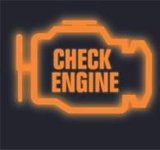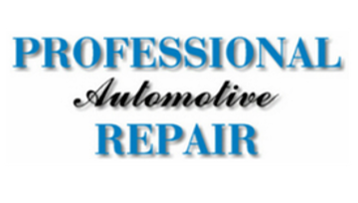Check Engine Light Causes and Fixes

What do I need to do if my check engine light comes on ?
The Check Engine light has almost become an icon associated with the auto repair industry. Few people have not seen it light up on their dash. Fewer still have a car equipped without a Check Engine light. Most people don’t know what to do other than think (groan) a trip to the service shop. While it seldom represents a critical danger to your car’s reliability to remain running it does mean you are very likely adding more than your share of pollution that causes smog and global warming.
*On OBD-II cars if the Check Engine light is on you will fail the Georgia Clean Air emissions test automatically even if it is a false alarm! Professional Repair is licensed by the state to perform emissions testing on 1996 and newer model cars.
The Check Engine light has almost become an icon associated with the auto repair industry. Few people have not seen it light up on their dash. Fewer still have a car equipped without a Check Engine light. Most people don’t know what to do other than think (groan) a trip to the service shop. While it seldom represents a critical danger to your car’s reliability to remain running it does mean you are very likely adding more than your share of pollution that causes smog and global warming.
*On OBD-II cars if the Check Engine light is on you will fail the Georgia Clean Air emissions test automatically even if it is a false alarm! Professional Repair is licensed by the state to perform emissions testing on 1996 and newer model cars.
What you should know and what you should do
During the late 1980′s, in an effort to mandate less polluting cars, the Federal Government legislated that cars should be equipped with a warning light for any condition that might cause your car to have higher than normal emissions. This was the start of the ”OBD” (On Board Diagnostic system) and the “Check Engine” light. At first, these programs were crude and unreliable. Often the light would turn on with no evident fault in the car. A ” False Alarm” . You could reset the light and maybe it would come on again and maybe not. But still, it was a step towards cleaner air.
In 1996 the monitoring systems became more sophisticated and would give fairly reliable Diagnostic Trouble Codes (DTC) codes when the Check Engine light came on. This newer system is known as the OBD-II (On Board Diagnostic system, level two). Most of the DTCs (Diagnostic Trouble Codes) in these systems are accurate. But not all the time! Once again, in the case of a ” False Alarm” you could reset the light and maybe it would come on again and maybe not.
Your Check Engine light does not usually indicate there is a “crisis” that could leave you stranded. However, you should check your temperature gauge for overheating (if equipped) and check your engine oil level just to be safe. The Check Engine light only comes on for conditions that could lead to higher emissions. Most of these conditions do not reflect the reliability of the car to run. Conversely, your engine could have serious problems that need immediate attention and the Check Engine Lightwill not come on because the problem doesn’taffectt your emissions. For example, you could be nearly out of oil or coolant and these will not trigger a Check Engine light because your emissions are still OK, right up until the point the engine self destructs. An engine that does not run never creates air pollution. Remember pollution, not mechanical condition, is what the Check Engine light is monitoring.
Being able to test, diagnose, and repair these symptoms becomes increasingly complex each year. Have you noticed most emission inspection stations don’t do repairs? The investment in equipment and training is very costly and requires more skills than knowing how to simply plug up a emission tester and rule that a car passes or fails.
Professional Repair has invested tens of thousands of dollars to have the most up to date diagnostic equipment. The cost of a scan (reading and recording the DTCs) without repairs or attempting to reset the check engine light is a:
$30.00 service charge
This charge is for scanning and recording only.
The cost of scanning and attempting to reset the check engine light (the light will come right back on if the fault re-occurs or is a permanent fault) is a:
$48.50 service charge
In either case, if repairs are made during the same visit the diagnostic fee will be waived. The good news is that most emission repairs are covered for a longer warranty period than the normal car warranty. We will always let you know if the codes indicate a repair that could be done under an extended factory warranty.
Contact the store nearest you to get your check engine light diagnosed.
Please note that scanning other vehicles systems such as transmission, suspension, brakes, climate control etc., the same charges apply as scanning for a check engine light.
During the late 1980′s, in an effort to mandate less polluting cars, the Federal Government legislated that cars should be equipped with a warning light for any condition that might cause your car to have higher than normal emissions. This was the start of the ”OBD” (On Board Diagnostic system) and the “Check Engine” light. At first, these programs were crude and unreliable. Often the light would turn on with no evident fault in the car. A ” False Alarm” . You could reset the light and maybe it would come on again and maybe not. But still, it was a step towards cleaner air.
In 1996 the monitoring systems became more sophisticated and would give fairly reliable Diagnostic Trouble Codes (DTC) codes when the Check Engine light came on. This newer system is known as the OBD-II (On Board Diagnostic system, level two). Most of the DTCs (Diagnostic Trouble Codes) in these systems are accurate. But not all the time! Once again, in the case of a ” False Alarm” you could reset the light and maybe it would come on again and maybe not.
Your Check Engine light does not usually indicate there is a “crisis” that could leave you stranded. However, you should check your temperature gauge for overheating (if equipped) and check your engine oil level just to be safe. The Check Engine light only comes on for conditions that could lead to higher emissions. Most of these conditions do not reflect the reliability of the car to run. Conversely, your engine could have serious problems that need immediate attention and the Check Engine Lightwill not come on because the problem doesn’taffectt your emissions. For example, you could be nearly out of oil or coolant and these will not trigger a Check Engine light because your emissions are still OK, right up until the point the engine self destructs. An engine that does not run never creates air pollution. Remember pollution, not mechanical condition, is what the Check Engine light is monitoring.
Being able to test, diagnose, and repair these symptoms becomes increasingly complex each year. Have you noticed most emission inspection stations don’t do repairs? The investment in equipment and training is very costly and requires more skills than knowing how to simply plug up a emission tester and rule that a car passes or fails.
Professional Repair has invested tens of thousands of dollars to have the most up to date diagnostic equipment. The cost of a scan (reading and recording the DTCs) without repairs or attempting to reset the check engine light is a:
$30.00 service charge
This charge is for scanning and recording only.
The cost of scanning and attempting to reset the check engine light (the light will come right back on if the fault re-occurs or is a permanent fault) is a:
$48.50 service charge
In either case, if repairs are made during the same visit the diagnostic fee will be waived. The good news is that most emission repairs are covered for a longer warranty period than the normal car warranty. We will always let you know if the codes indicate a repair that could be done under an extended factory warranty.
Contact the store nearest you to get your check engine light diagnosed.
Please note that scanning other vehicles systems such as transmission, suspension, brakes, climate control etc., the same charges apply as scanning for a check engine light.





